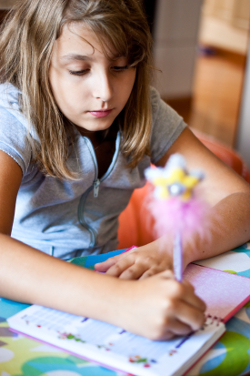by Lesley Snell
Set out below are a list of the things you might want to think about when moving your children to an Australian school. The information is general in nature and things might vary from state to state so it’s best to check with the Education Department in the state you are moving to.
They are listed below the article. Also, Lesley is quite happy for you to add your comments on her Facebook page.
1. Your child will be anxious and excited at the same time. Listen to their concerns/expectations. Make a list of them together and see if you can get them answered by the school.Look at school websites together.
Rest assured, in my experience your child will settle in very quickly in a friendly, organised school.
2. Identify your priorities.
Where do you want to live? How will children get to school? Do you need school after-care? Are you interested in a Government or private school?
3. Clarify your visa position.
In NSW families on a temporary visa may face education fees of $4000 to $6000 AU per child per year for a Government school. There may be catchment restrictions also. Check with your state’s Education Department.
4. If you are coming over for a visit before moving permanently try to visit the schools you are interested in to get a “feel” for them. Meet the principal, staff and children. Bring school reports and carefully discuss the placement of your child. Differences in timing and the school year will throw up some challenges but most principals are familiar with them and are used to placing “newbies” from the Northern Hemisphere!
5. There are no major differences in curriculum content at this stage of writing. In 2012 Australia will be moving towards a National Curriculum.
Sports are BIG in schools and also many primary schools run very successful and competitive bands and children are encouraged to play an instrument.
6. Most Government schools will have extra curricular fees to cover stationery, school trips and staffing costs along with a PTA (called P and C here) contribution. These fees are not compulsory but in reality it is expected you pay. Families with financial concerns may talk privately to their principal to discuss payment options. A rough guide might be about $300 to $400 AU for a primary child and up to a $800 AU a year for a high school child. Some of the fees may be claimed come tax time…keep receipts and talk to an accountant.
7. Say goodbye to “Dinner Money” – there are no hot sit-down meals in school in the majority of schools. Lunch is outside and it’s “bring your own” or order in the morning from the school canteen.
8. Most schools operate on a four-term year (each term being 10 weeks). Each term is separated by a two week holiday and 6 weeks in the summer (more about that later!).
9. Once your child is at school make an appointment to see your child’s teacher in a month’s time, to check on progress and iron out any concerns. I am betting things will be going smoothly.
10. Six weeks of summer holidays goes VERY quickly. Imagine Xmas,New Year and your family holiday all rolled into one. They are back to school before you know it.!!!!!
And a half…get used to your child’s new vocabulary, it will change HEAPS!
As well as being a primary school teacher Lesley is a director of her own company…Northern Beaches Know-How. She helps families settle on Sydney's Northern Beaches, allowing them to find and identify the services they need.
http://www.facebook.com/pages/Northern-Beaches-Know-How/121294921231013
http://www.northernbeachesknow-how.com.au
Lesley@northernbeachesknow-how.com.au

